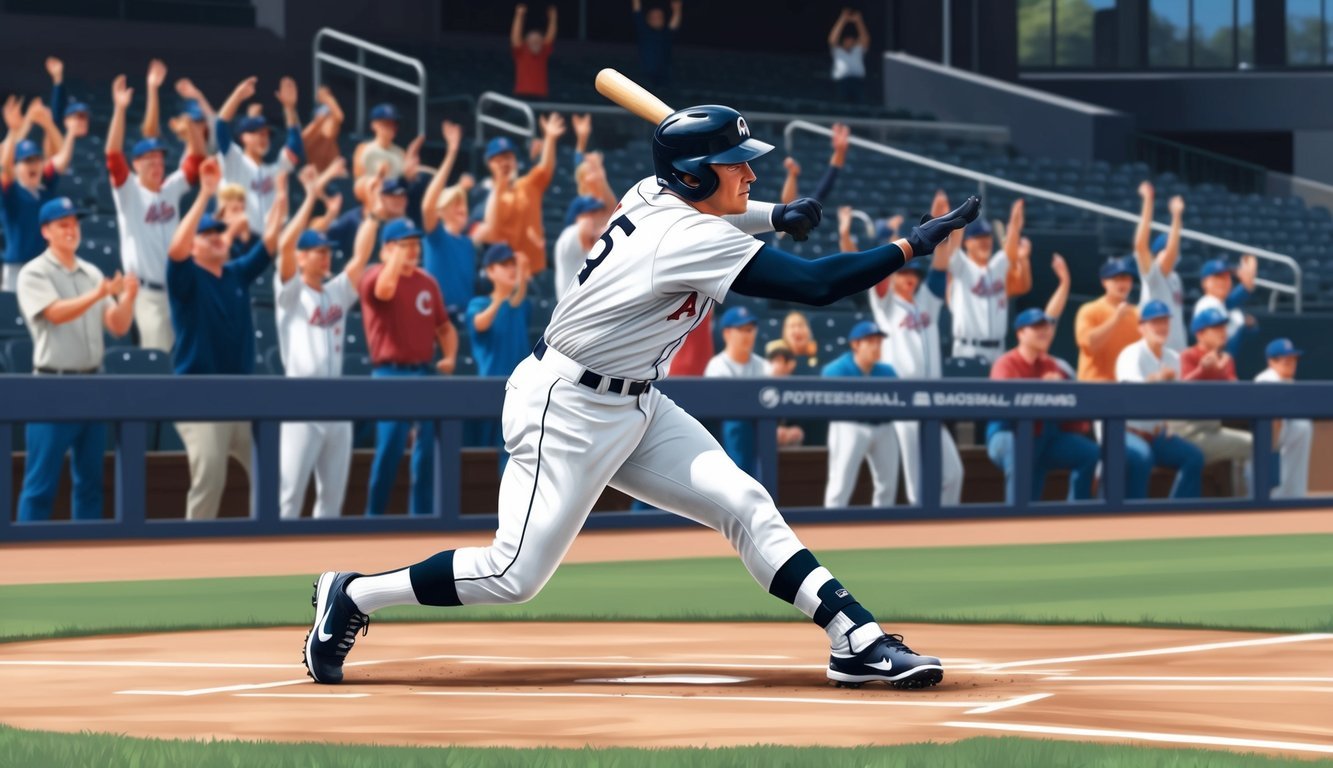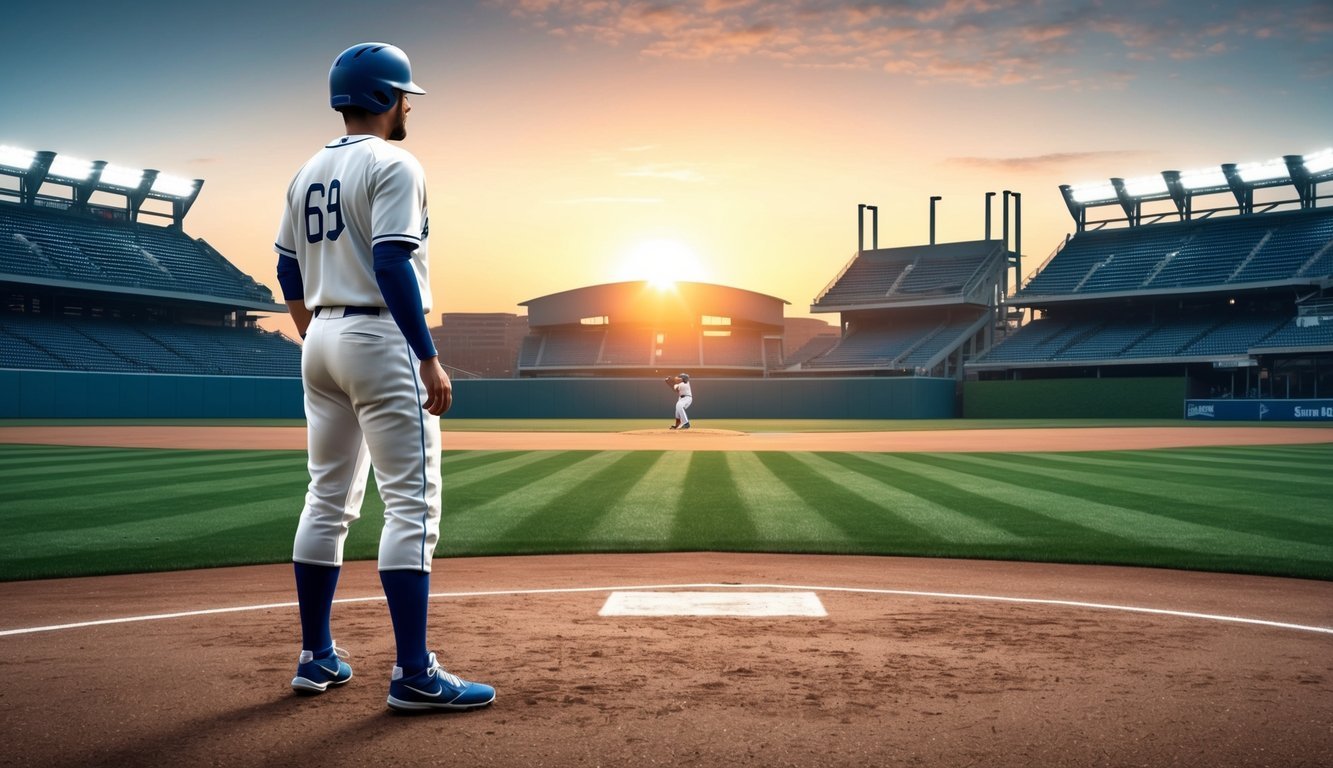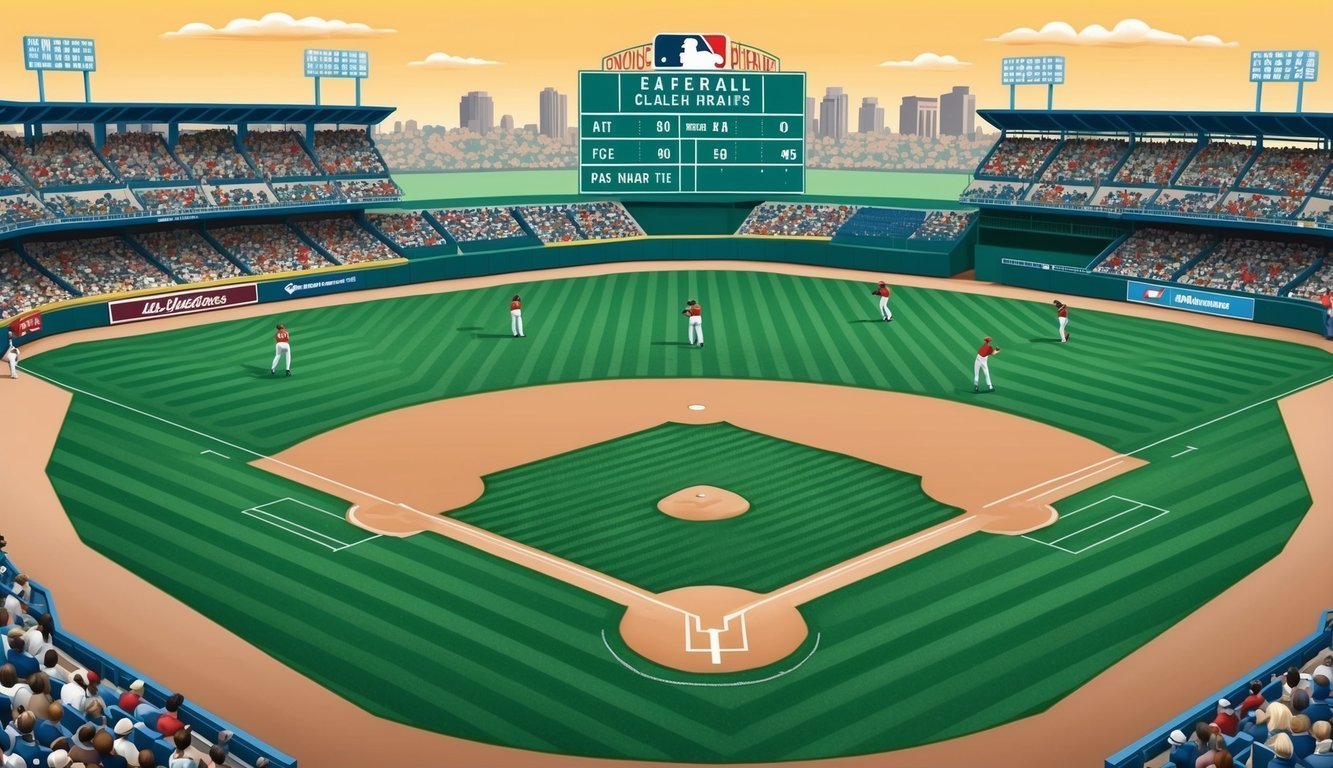Minor league baseball players often dream of making it to the big leagues, but the path to success can be challenging financially.
Triple-A (AAA) baseball, the highest level of minor league play, offers better compensation than lower levels but still falls far short of major league salaries.
Triple-A baseball players typically earn between $2,150 and $7,500 per month during the playing season. This translates to an annual salary range of roughly $11,000 to $35,800, depending on factors like experience and individual contracts.
While this represents a significant increase from rookie-level pay, it’s a fraction of the MLB minimum salary of $700,000 per year.
The financial reality for AAA players underscores the importance of making it to the major leagues.
Many aspiring pros juggle their baseball careers with off-season jobs to make ends meet.
Despite the modest pay, the chance to showcase their skills at the AAA level keeps these athletes motivated as they pursue their big-league dreams.
Understanding Minor League Levels

Minor League Baseball serves as the developmental system for Major League Baseball, with multiple levels designed to nurture talent.
Players progress through these ranks as they hone their skills and aim for the big leagues.
The Structure of Minor League Baseball
Minor League Baseball consists of several tiers:
- Rookie League
- Low-A
- High-A
- Double-A (AA)
- Triple-A (AAA)
Each level presents increasing challenges and competition.
Teams at these levels are affiliated with MLB organizations, creating a pipeline for player development.
Rookie leagues focus on raw talent, often featuring recent draftees and young international signings.
Low-A and High-A offer more structured environments for developing fundamentals.
Differences Between Class A, Double-A, and Triple-A
Class A baseball includes Low-A and High-A levels.
Players here are typically in their early 20s, refining basic skills.
Double-A (AA) represents a significant jump in quality.
Many top prospects spend time at this level, facing tougher competition.
The talent pool is more concentrated, with sharper pitching and hitting.
Triple-A (AAA) is the highest minor league level.
It’s often called “one step away from the majors.” Players here are usually MLB-ready or close to it.
Many have big league experience.
Road to the MLB: Progressing Through the Ranks
Advancing through the minor leagues requires consistent performance and skill improvement.
A typical journey might start in Rookie ball or Low-A after being drafted.
Talented players can skip levels, while others may spend multiple seasons at one tier.
The goal is to reach AAA and ultimately earn a spot on the 40-man MLB roster.
Factors influencing promotion include:
- Statistical performance
- Defensive skills
- Team needs at higher levels
- Age and experience
Organizations carefully monitor player development, balancing individual progress with team success at each level.
Triple-A Baseball Player Earnings
Triple-A baseball players earn more than their counterparts in lower minor leagues, but still far less than major leaguers.
Their pay varies based on several key factors.
Salary Ranges for AAA Baseball Players
AAA baseball players typically earn between $2,150 and $7,500 per month during the season.
The minimum monthly salary for Triple-A players is $2,150.
More experienced or higher-performing players can earn towards the upper end of this range.
AAA salaries are paid only during the playing season, which usually lasts about 5 months.
Players don’t receive pay in the off-season.
Some sources report an average annual salary for Triple-A players around $57,500.
However, this figure can be misleading as it doesn’t account for the wide range of individual earnings.
Comparing Salaries Across Different Minor Leagues
Triple-A salaries are the highest in minor league baseball.
Here’s how they compare to other levels:
- Rookie/Short-Season A: $400-$700/month
- Class A: $500/month minimum
- Double-A: $600/month minimum
- Triple-A: $2,150/month minimum
The jump from Double-A to Triple-A represents the largest salary increase in the minor leagues.
This reflects the higher skill level and proximity to the majors for Triple-A players.
Factors Influencing AAA Player Salaries
Several factors can impact a Triple-A player’s earnings:
-
Experience: Players with more years in professional baseball often command higher salaries.
-
Performance: Standout players may negotiate better contracts or earn performance bonuses.
-
MLB 40-man roster status: Players on a major league team’s 40-man roster earn higher salaries while in Triple-A.
-
Signing bonuses: Top prospects who received large signing bonuses may have negotiated higher minor league salaries.
-
Team budget: Some organizations may offer slightly higher pay to attract or retain talented players.
Additional Earnings and Benefits

AAA baseball players have opportunities to supplement their base salaries through various means.
They may also receive certain benefits to support their health and future.
Performance Bonuses and Incentives
AAA players can earn extra money through performance-based bonuses and incentives.
Teams often offer rewards for achieving specific milestones or statistical targets.
These can include bonuses for making the All-Star team, winning league awards, or reaching certain batting or pitching benchmarks.
Players who get added to their MLB team’s 40-man roster typically see a significant pay bump.
This promotion also opens doors to potentially lucrative big-league call-ups.
Some organizations provide signing bonuses to top prospects, which can range from a few thousand dollars to over a million for highly touted draftees.
Health Insurance and Retirement Plans
AAA players generally receive basic health insurance coverage during the season.
This helps offset medical costs related to injuries or illnesses.
Many teams offer limited retirement benefits, though these are often not as comprehensive as those provided to major leaguers.
Some organizations provide tuition assistance programs, allowing players to continue their education during the off-season.
Players who spend time in the major leagues become eligible for the MLB pension plan, which can provide significant long-term financial security.
Life as a Minor League Player
Minor league baseball players face unique challenges and opportunities as they pursue their dreams of reaching the majors.
Their daily lives involve a mix of intense training, travel, and personal development, all while navigating financial constraints.
Travel and Accommodation
Minor league players spend a significant portion of their time on the road.
Bus trips between cities are common, often lasting several hours.
Players typically share hotel rooms with teammates to cut costs.
Some teams provide housing stipends, but many players struggle to find affordable accommodations during the season.
In recent years, MLB has mandated that teams provide housing for minor leaguers, easing some financial burden.
However, players still face challenges during spring training and the offseason when they’re responsible for their own living arrangements.
Working Conditions and Training Facilities
Training facilities vary widely across minor league teams.
Some organizations invest in state-of-the-art equipment and spaces, while others have more basic setups.
Players often arrive early for practice and stay late to work on their skills.
Meals can be a challenge, with limited options on the road and tight budgets.
Some teams provide pre-game meals, but players are often responsible for their own nutrition outside of game times.
The offseason presents its own set of challenges.
Many players take on second jobs to make ends meet while continuing their training regimens.
Education and Future Career Planning
Many minor leaguers enter professional baseball straight out of high school or college.
Balancing education with a demanding baseball schedule can be difficult.
Some organizations offer educational programs or tuition assistance to help players continue their studies.
Career planning is crucial, as only a small percentage of minor leaguers make it to the majors.
Players are encouraged to develop skills beyond baseball and consider alternative career paths.
Some teams provide workshops on financial management and career development.
These programs aim to prepare players for life after baseball, recognizing the competitive nature of the sport and the importance of having a backup plan.
Paving the Way to the Big Leagues

AAA baseball serves as the final stepping stone for players aiming to reach Major League Baseball.
It’s a crucial stage where talent meets opportunity, and careers can take off.
Promotions and Career Advancement
AAA players constantly strive to catch the eye of major league scouts and managers.
Strong performances can lead to coveted call-ups to the big leagues.
Some players may shuttle between AAA and the majors multiple times in a season.
Consistent success at the AAA level often results in longer-term promotions.
Players who excel may find themselves on the 40-man roster, increasing their chances of making it to the show.
Versatility is key.
AAA players who can handle multiple positions are more likely to get the call when injuries occur at the major league level.
The Impact of Talent and Performance
In AAA baseball, players must refine their skills and demonstrate they can compete at a high level.
Hitting for average and power, fielding prowess, and pitching consistency are all closely monitored.
In addition to these fundamental skills, players are also evaluated on their physical conditioning and mental toughness, as these attributes significantly impact performance during games.
Understanding the concept of ‘baseball weight explained‘ becomes crucial for athletes looking to maximize their effectiveness and endurance on the field.
By mastering their physical and mental game, players increase their chances of being called up to the major leagues.
Statistics play a crucial role.
Scouts and analysts pore over data to identify standout performers.
A hot streak or breakout season can fast-track a player to the majors.
Competition is fierce.
AAA rosters include experienced veterans and promising rookies, all vying for limited spots in the big leagues.
This competitive environment pushes players to elevate their game.
Mental toughness is as important as physical ability.
Players who can handle pressure and maintain focus often separate themselves from the pack.
